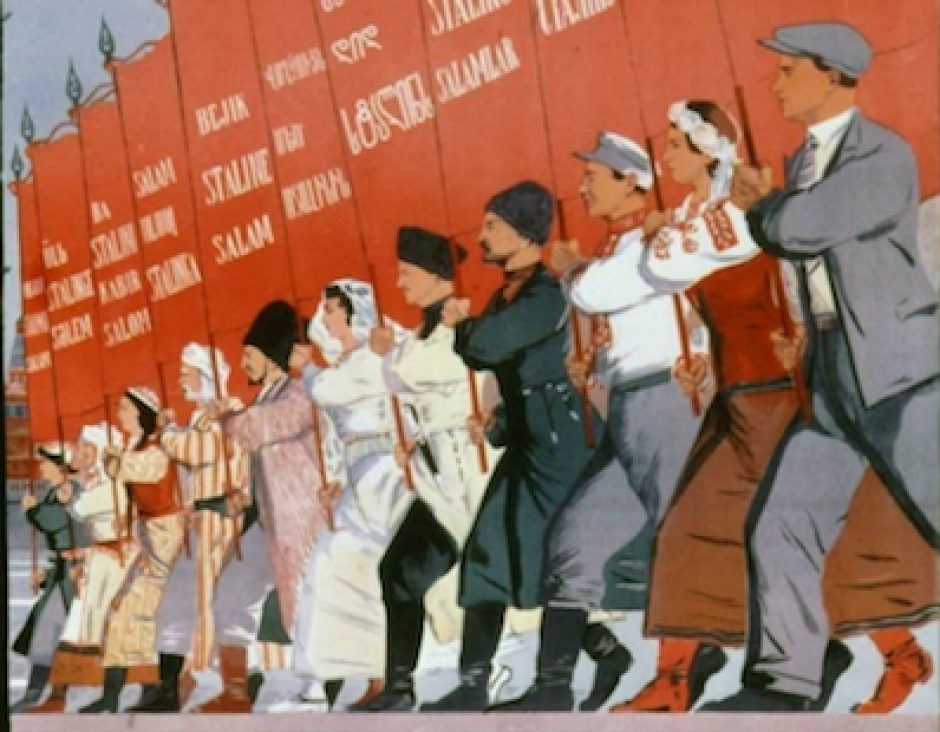Course Description
This course explores the methods used by the Soviet government to put culture to work as a soft-power mechanism for legitimizing and strengthening its power across the 15 republics of the Soviet Union. From Ukraine and Belarus in the West to the Central Asian territories in the East, the Soviet state sought to employ the rhetoric of national liberation and advancement to mark its difference from Imperial Russia, gain the loyalty of the many subject peoples it inherited from the previous regime, and bring them into a social and cultural formation that matched officials’ distinctly European vision of “modernity.” In the first half of the semester, we will investigate the development of Soviet nationalities policy, including the often-contentious decisions about how to define a “nation” and what forms of “national” expression to allow. Along the way, we will consider issues of territorialization, modernization, and performance of selfhood. In the second half, we will focus on specific aspects of culture, including literature and theater, music, architecture, and cuisine, and explore efforts to bring these cultural products into conformity with the Stalinist formula, “national in form, socialist in content.” Through close engagement with primary and secondary sources, we will discover the Soviet state’s reasons for seeking to transform the cultures of its national minorities and its chosen methods for doing so. Further, we will uncover some of the ways in which members of those minorities resisted or repurposed Soviet nationalities policy to serve their own ends.
